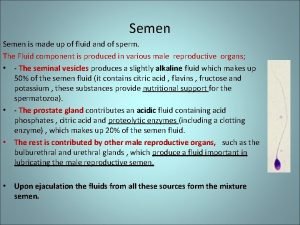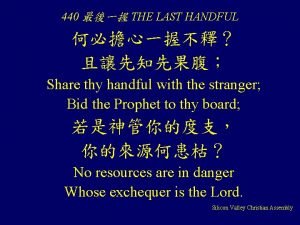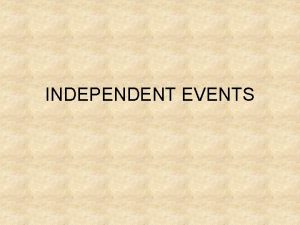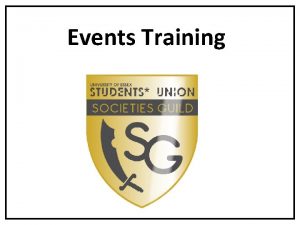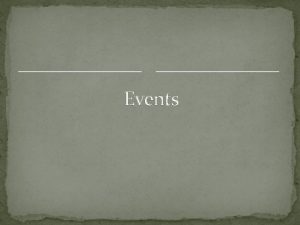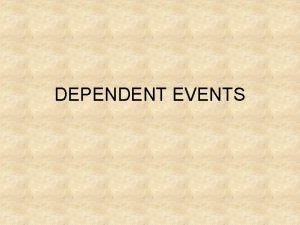Among the handful of seminal events that shaped














- Slides: 14

“Among the handful of seminal events that shaped the American mind and continent, King Philip’s War is perhaps the least studied and most forgotten. In essence, the war cleared southern New England’s native population from the land, and with it a way of life that had evolved over a milennium. ”—Eric B. Shultz King Philip’s War 1675 -1676

King Philip (Metacom) � King Philip was the son of Massasoit (chief/sachem of the Wampanoag and friend of the Pilgrims). � The Wampanoag had been weakened by disease and saw the Pilgrims as potential allies. � Philip was educated in English schools, spoke English, and originally thought the Pokanokets & Wampanoags would be welcomed in the Puritan colonies. � Philip became the sachem at around the age of 24

Seeds of Conflict In 1671, the Puritans pressured King Philip into granting sovereign authority over the lands of his people. Humiliated, King Philip began to realize that conflict would always exist between the two peoples. Lacking a collective identity as “Indians”, the natives thought of themselves as members of particular tribes, which weakened them in their dealings with the Puritans

The Start of the War In the spring of 1675, three Pokanoket Indians were accused of killing a Christian Indian from a praying town and hiding his body under the ice of a frozen lake. (The Pokanokets felt the man was acting as an informant). The 3 men were hanged, which angered some young warriors of the Pokanoket tribe. They, in turn, attacked some isolated colonial homesteads, looting and burning each locale. Other tribes, led by King Philip, saw this as a chance to gain revenge on other complaints that they had against the colonists. The united colonies of New England joined together to invade the Indian territory by force.

Praying Towns Beginning in the 1640’s, Reverend John Eliot and others began to develop “praying towns”, with the hope of converting the Indians to Christianity. The Indians were doomed if they remained in “so unfixed, confused, and ungoverned life, uncivilized and unsubdued to labor and order. ” (Reverend Eliot, pg. 197). By compacting the Indians in these towns, more land opened up to the colonists. The Indians also began to take English names and to farm rather than hunt. Massasoit rejected this form of lifestyle from the Puritans.

Indian Concerns Ironically, the Indians in the praying towns were seen to be untrustworthy to the Puritans, even though they had adapted English ways. Consequently, these Indians were forced to leave the praying town and go live on two barren islands in Boston harbor, where many died from exposure, disease, and malnutrition. After losing in early battles, the Puritans turned to the Pequot, Mohegan, and Mohawk Indians (the Mohawks were part of the Iroquois Nation) as allies. These allies taught them how to fight the “skulking way of war” –John Eliot.

The Great Swamp Battle On December 19, 1675 the combined armies of Massachusetts Bay, Plymouth, and Connecticut attacked a large, fortified Narragansett village (located in present-day South Kingstown, Rhode Island). 600 hundred Narragansett were killed, as well as many Puritans. Though Philip was not there, this cost him many men and forced him to turn travel to old enemies , in hopes of making new allies.

The Iroquois Confederacy Rejects King Philip’s Call for Aid King Philip, running out of gun powder & ammuntion, turned to the Iroquois Confederacy for aid. The Iroquois rejected giving aid, and increased attacks on their old rivals, the Algonquins (who were allied to King Philip). Philip was now on the run for the rest of the war; the “hunter” had become the “hunted. ” Benjamin Church and Alderman (an Indian who had told King Philip to make peace with the Puritans) surprised him on August 12, 1676 at Anawan Rock. Alderman shot him and King Philip “fell upon his face in the mud and water, his gun under him. ” –Benjamin Church

The “Celebration” of King Philip’s Demise King Philip’s body was mutilated, and a hand was literally given (amputated) to Alderman for firing the shot that felled King Philip’s head was taken back to Plymouth and put on a spear to be displayed at the gate for the next twenty years. Wootonekanuska (King Philip’s wife) and his son were also captured. They were sold into slavery in the West Indies, after much debate. In 1679, King Philip’s 7000 acres were sold to the Plymouth Colony. The war was over.

Aftermath of King Philip’s War The Iroquois Confederacy had joined with the colony of New York to form their alliance against King Philip. In return for their help, the Iroquois were to be regarded as the dominant tribes to the colonies. This was called the Covenant Chain. Plymouth kept King Philip’s head on display for 20 years to warn others of further treachery. Alderman kept King Philip’s hand in a bucket of rum and show it off at taverns for a fee. The chart shows how this war was one of bloodiest battles in American history. WAR: Death per 100, 000 King Philip’s War: English: Native American 1, 538 15, 000 American Revolution: 180 Civil War 857 World War II 206

Quotes & Notes “It was the single most cataclysmic event of 17 th century colonial New England. ” –Eric B. Shultz (pg. 6, King Philip’s War) The Wampanoag tribe was so decimated by this war that they did not hold another powwow until 1929 (253 years after the death of King Philip). �“The times are Exceedingly Alter’d, Yea the time have turned everything upside down, or rather we have Chang’d the good Times, Chiefly by the help of the White People, for in Times past, our forefathers. . . Had everything in Great plenty…But alas, it is not so now, all our Fishing, Hunting, and Fowling is entirely gone. ” –A Mohegan (1789)

Quotes & Notes Benjamin Church was the Puritan who was in charge of hunting down King Philip. Here’s an excerpt from his diary: Church described him “a doleful, great, naked, dirty beast. ” The Puritan men gave 3 hurrahs when news came of his death. � “They were soon in the swamp, and Philip the foremost, who starting at the first gun, threw his petunk and powderhorn over his head, catched up his gun, and ran as fast as he could scamper, without more clothes than his small breeches and stockings; and ran directly on two of Captain Church’s ambush. They let him come fair within shot, and the Englishman’s gun missing fire, he bid the Indian fire away, and he did so to (the) purpose; sent one musket bullet through his heart, and another no above two inches from it. He fell upon his face in the mud and water, with his gun under him. ”

Paul Revere’s Image of King Philip Though Revere was born 60 years AFTER the death of King Philip , his engraving of the fallen chief as led to some interesting descriptions of King Philip: “Hideous” “A neurotic pygmy” “A grotesque effigy” “A terror to children”

Quotes by Washington Irving The colonists were “moved to hostility by the lust of conquest. ” “How many intellectual beings were hunted from the earth, how many brave and noble hearts, of nature’s sterling coinage, were broken down and trampled in the dust!” King Philip was “the most distinguished of a number of contemporary Sachems… who made the most of generous stuff of which human nature is capable, fighting to the last gasp in the cause of their � “He was a pariot attached to his native soil- a prince true to his subjects, and indignant of their wrongs- a soldier, daring in battle, firm in adversity, patient in fatigue, of hunger, or every variety of bodily suffering, and read to perish in the cause he had espoused. Proud of heart, and with and untamable love of natural liberty…with heroic qualities and bold achievements that would have graced a civilized warrior. ” (from Rip Van Winkle and other Stories)
Handful of rice characters
 A handful of rice characters
A handful of rice characters Hãy nói thật ít để làm được nhiều
Hãy nói thật ít để làm được nhiều Thơ thất ngôn tứ tuyệt đường luật
Thơ thất ngôn tứ tuyệt đường luật Tôn thất thuyết là ai
Tôn thất thuyết là ai Ngoại tâm thu thất chùm đôi
Ngoại tâm thu thất chùm đôi Chiến lược kinh doanh quốc tế của walmart
Chiến lược kinh doanh quốc tế của walmart Gây tê cơ vuông thắt lưng
Gây tê cơ vuông thắt lưng Premature atrial contraction
Premature atrial contraction Tìm vết của mặt phẳng
Tìm vết của mặt phẳng Sau thất bại ở hồ điển triệt
Sau thất bại ở hồ điển triệt Thơ thất ngôn tứ tuyệt đường luật
Thơ thất ngôn tứ tuyệt đường luật Transverse cervical ligament
Transverse cervical ligament Penis é um musculo
Penis é um musculo Semen volume normal range
Semen volume normal range













